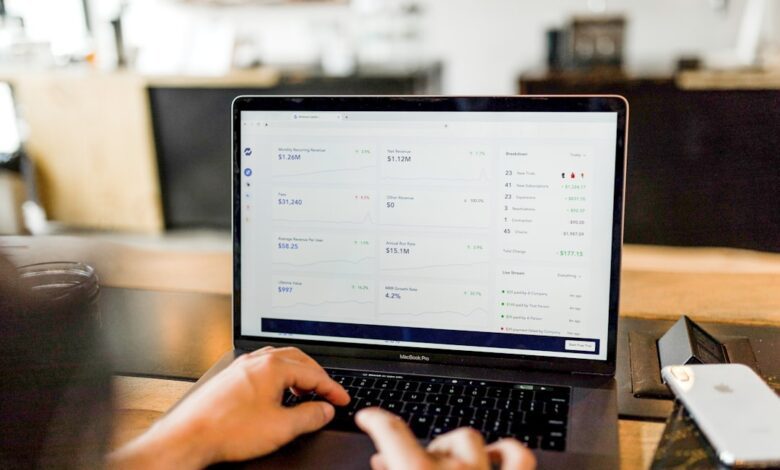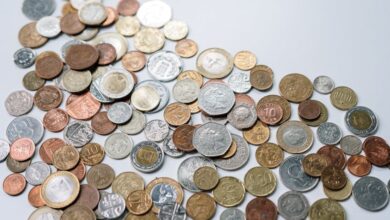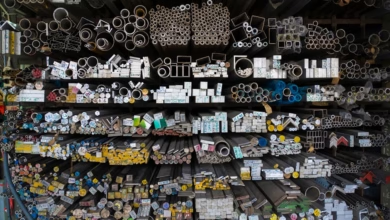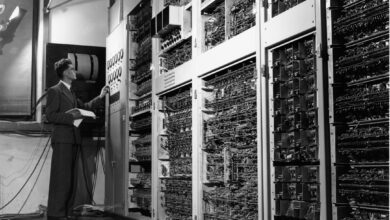Metals in Motion: Analyzing Industrial Demand, Investment Trends, and Economic Indicators

In today's rapidly evolving economic landscape, the significance of metals transcends mere commodities; they are pivotal to both industrial innovation and investment strategies. This article delves into the multifaceted roles of various metals, starting with silver, which serves as both a critical industrial resource and a sought-after investment asset. We will explore how copper prices provide insights into global economic health, reflecting trends that can influence investor confidence. Additionally, the rising demand for rare earth metals, driven by green energy technologies, highlights the intersection of sustainability and economic growth.
We will also compare the investment potential of platinum and palladium, two precious metals with distinct market dynamics, while discussing how metals can serve as a hedge against inflation in diversified investment portfolios. Furthermore, we will examine the future of aluminum as a key player in sustainable economies and the implications of mining regulations on metal prices. Through this comprehensive analysis, we aim to illuminate the critical role that these metals play in shaping both industrial landscapes and investment opportunities in an increasingly interconnected world.
- 1. "Silver's Dual Function: Industrial Uses and Investment Appeal"
- 2. "Copper Prices as Economic Indicators: A Closer Look at Global Trends"
- 3. "Navigating the Green Revolution: The Rising Demand for Rare Earth Metals"
1. "Silver's Dual Function: Industrial Uses and Investment Appeal"
Silver plays a unique and multifaceted role in both industrial applications and as an investment vehicle, making it a dual-function metal in today’s economy. On the industrial side, silver is highly valued for its exceptional conductivity, thermal properties, and resistance to corrosion. These attributes make it an essential component in various sectors, including electronics, solar energy, and medical devices. For instance, silver is used in photovoltaic cells, which are critical for the production of solar panels, reflecting the metal’s increasing importance in the green energy movement. Additionally, silver’s antibacterial properties find applications in healthcare, such as in wound dressings and coatings.
Conversely, silver’s appeal as an investment stems from its historical significance as a precious metal and its position as a hedge against inflation and economic instability. Investors often turn to silver during times of market volatility, viewing it as a safe haven akin to gold. The metal’s relatively lower price compared to gold makes it accessible for a wider range of investors, further enhancing its attractiveness. Moreover, silver’s dual role as both an industrial commodity and a store of value creates a dynamic market, where demand from both sectors can influence price movements. This interplay between industrial consumption and investment demand means that silver can act as an indicator of broader economic trends, making it a compelling asset for both traders and long-term investors alike.
2. "Copper Prices as Economic Indicators: A Closer Look at Global Trends"
Copper prices have long been considered a barometer for global economic health, often referred to as “Dr. Copper” due to its ability to reflect demand trends across various sectors. As a versatile and widely used industrial metal, copper is integral in construction, electronics, and manufacturing. When economies are thriving, the demand for copper typically rises, leading to higher prices. Conversely, during economic downturns, demand diminishes, resulting in falling prices.
Recent trends highlight the correlation between copper prices and global economic indicators, such as GDP growth, industrial production, and construction activity. For instance, as countries like China and the United States ramp up infrastructure projects and manufacturing outputs, the demand for copper surges, pushing prices upward. Conversely, when economic uncertainties arise—such as during trade tensions or global crises—copper prices often experience volatility, reflecting decreased demand expectations.
Moreover, the copper market is influenced by other factors, including supply chain disruptions, mining output, and geopolitical events. For instance, labor strikes in major copper-producing countries or new mining regulations can lead to supply shortages, driving prices higher even amid subdued demand.
In recent years, the push for green technologies has further complicated the copper landscape. The transition to electric vehicles and renewable energy systems has increased copper demand, as these technologies rely heavily on the metal for wiring and components. This shift signifies that copper not only serves as a traditional economic indicator but also as a critical resource in the evolving landscape of sustainable technologies.
In summary, copper prices serve as a crucial indicator of global economic trends, influenced by both traditional industrial demand and emerging technological shifts. Monitoring these prices provides valuable insights into the broader economic climate, helping investors and policymakers gauge future growth trajectories.
3. "Navigating the Green Revolution: The Rising Demand for Rare Earth Metals"
As the world increasingly shifts towards sustainable energy solutions and green technologies, the demand for rare earth metals has surged significantly. These metals, which include elements like neodymium, dysprosium, and lanthanum, are essential components in various high-tech applications, particularly in the production of batteries, magnets, and catalysts used in electric vehicles (EVs), wind turbines, and other renewable energy systems.
The transition to green energy sources is driving an unprecedented expansion in the market for rare earth metals. For instance, the growing adoption of EVs is expected to propel demand for neodymium-iron-boron magnets, which are crucial for the motors in these vehicles. Additionally, the push for more efficient energy storage solutions has led to increased interest in rare earth elements used in advanced battery technologies. This rising demand is not only a response to consumer preferences for cleaner energy but also a reflection of government policies aimed at reducing carbon emissions.
However, the supply chain for rare earth metals poses challenges. A significant portion of the world’s supply is concentrated in a few countries, particularly China, which has historically dominated the market. This concentration raises concerns about geopolitical risks and supply chain vulnerabilities, prompting other nations to explore local sources and recycling options. As a result, investments in rare earth metal mining and processing are becoming increasingly attractive, with companies seeking to diversify their supply sources and reduce dependency on a single market.
In summary, the green revolution is reshaping the landscape for rare earth metals, presenting both opportunities and challenges. As demand continues to grow in line with technological advancements and environmental initiatives, stakeholders must navigate the complexities of sourcing, sustainability, and market dynamics to capitalize on this burgeoning sector.
In conclusion, the intricate interplay between metals and their multifaceted roles in both industrial applications and investment landscapes underscores the significance of these commodities in today’s economy. Silver, with its dual function, exemplifies the balance between industrial utility and investment allure. Similarly, copper prices serve as a critical barometer for global economic health, reflecting broader market trends and consumer confidence. The growing emphasis on green energy technologies has catalyzed a surge in demand for rare earth metals, highlighting the essential role these materials play in sustainable innovation.
As we compare platinum and palladium, investors must weigh the unique advantages and market dynamics of each metal to make informed decisions. Furthermore, incorporating metals into diversified investment portfolios can offer substantial benefits, especially in the face of inflation, which tends to drive up the prices of both precious and industrial metals. The future of aluminum appears promising, particularly in a sustainable economy, where its lightweight and recyclable properties are increasingly valued.
Finally, the impact of mining regulations cannot be overlooked, as they shape metal prices and influence market stability. As we move forward, understanding these interconnections will be crucial for both investors and industries. The trends discussed in this article not only illuminate current market dynamics but also pave the way for future developments in the metal sector, reinforcing the ongoing importance of these resources in both economic and environmental contexts.





